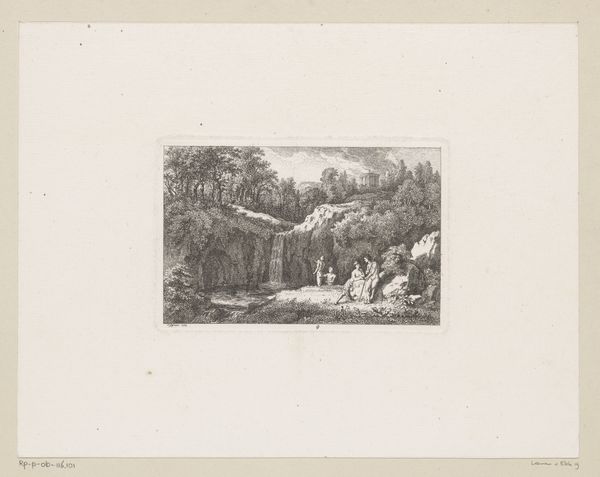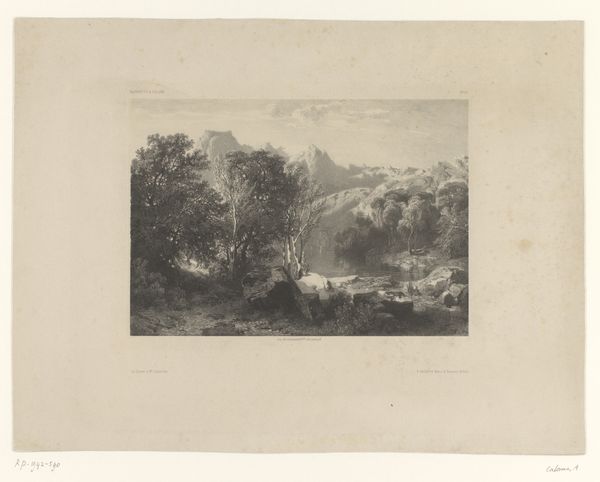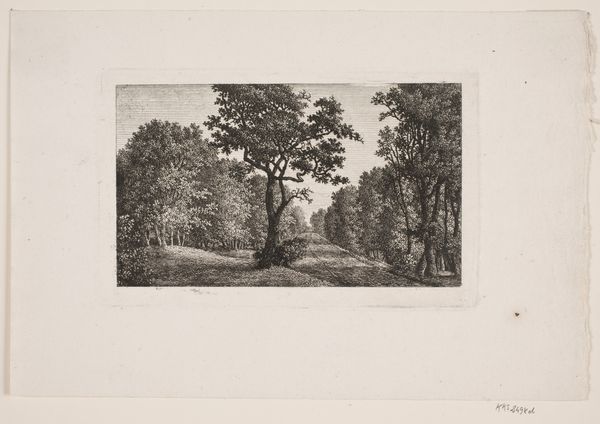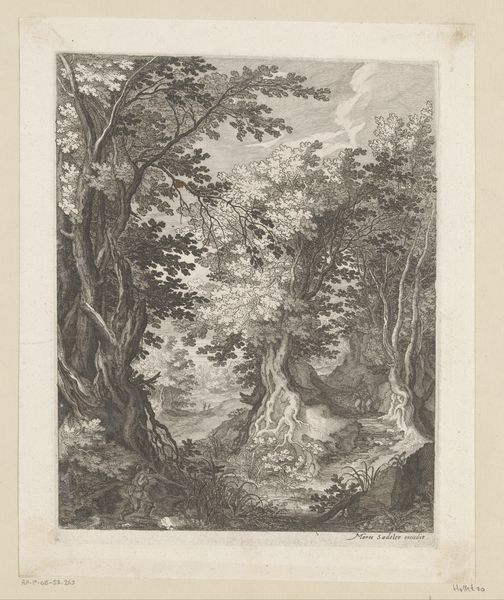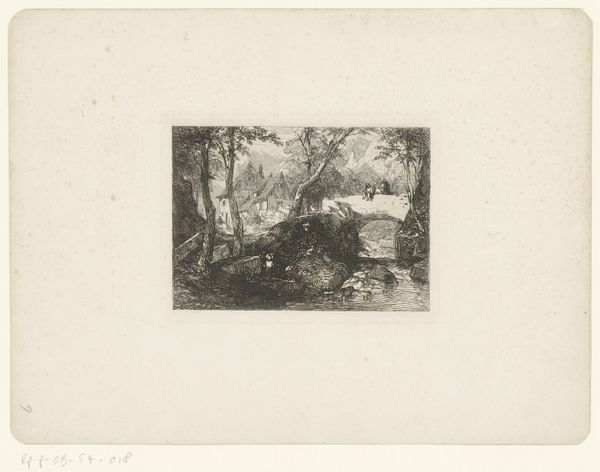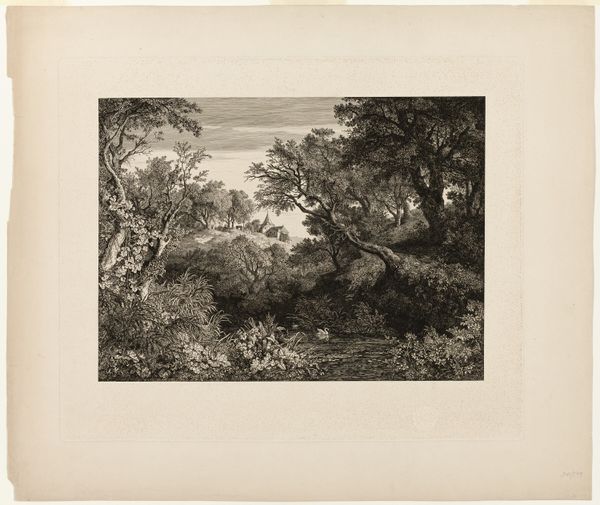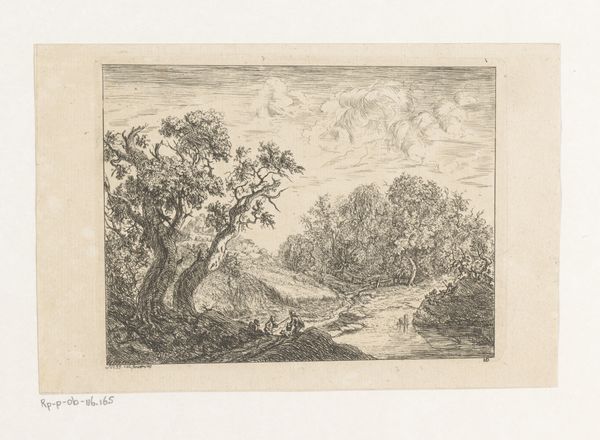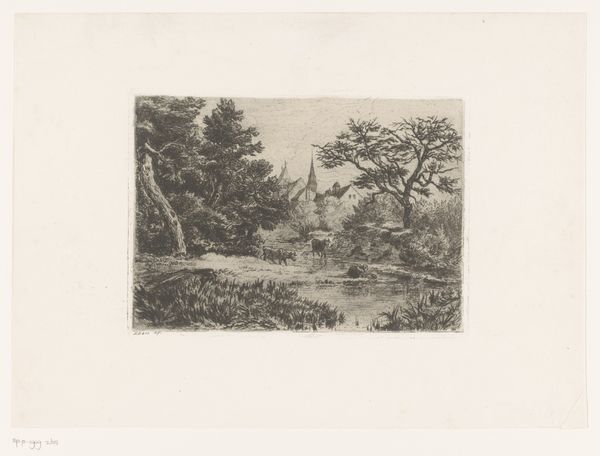
drawing, print, etching
#
drawing
# print
#
etching
#
landscape
#
line
#
realism
Dimensions: height 176 mm, width 215 mm
Copyright: Rijks Museum: Open Domain
Editor: Here we have Paulus Lauters' "Landschap" from 1835, a detailed etching currently held in the Rijksmuseum. It feels like a scene caught in a whisper, very quiet and still. I am drawn to ask, how do you interpret this work beyond its initial picturesque appeal? Curator: It’s interesting you mention the "quiet." For me, this piece speaks volumes about the social dynamics embedded within representations of nature. Look at the small figures dwarfed by the landscape. Who has access to leisure in this space, and who might be excluded? Editor: So, you see more than just a pretty landscape. You’re suggesting there’s a commentary on class and access? Curator: Precisely! The idealized rendering of nature often obscures the realities of labor and land ownership. Consider who is often missing from these landscapes. Where are the depictions of agrarian struggles or the environmental consequences of industrial development of this era? This absence is telling. Editor: That makes me think about the romanticizing of rural life in contrast to the urban squalor of the time. Were landscapes like this almost a form of propaganda? Curator: It's a complex issue. Art doesn't exist in a vacuum. These images shaped perceptions and desires. Ask yourself, how does the very concept of "landscape" contribute to ideologies of nationhood and ownership? Does viewing it challenge those things today? Editor: It’s fascinating to think about art as participating in larger social narratives, not just reflecting them. Thanks for pointing out a point of view I wouldn’t have considered otherwise. Curator: And thank you for seeing beyond the surface; critical dialogue keeps art relevant.
Comments
No comments
Be the first to comment and join the conversation on the ultimate creative platform.
